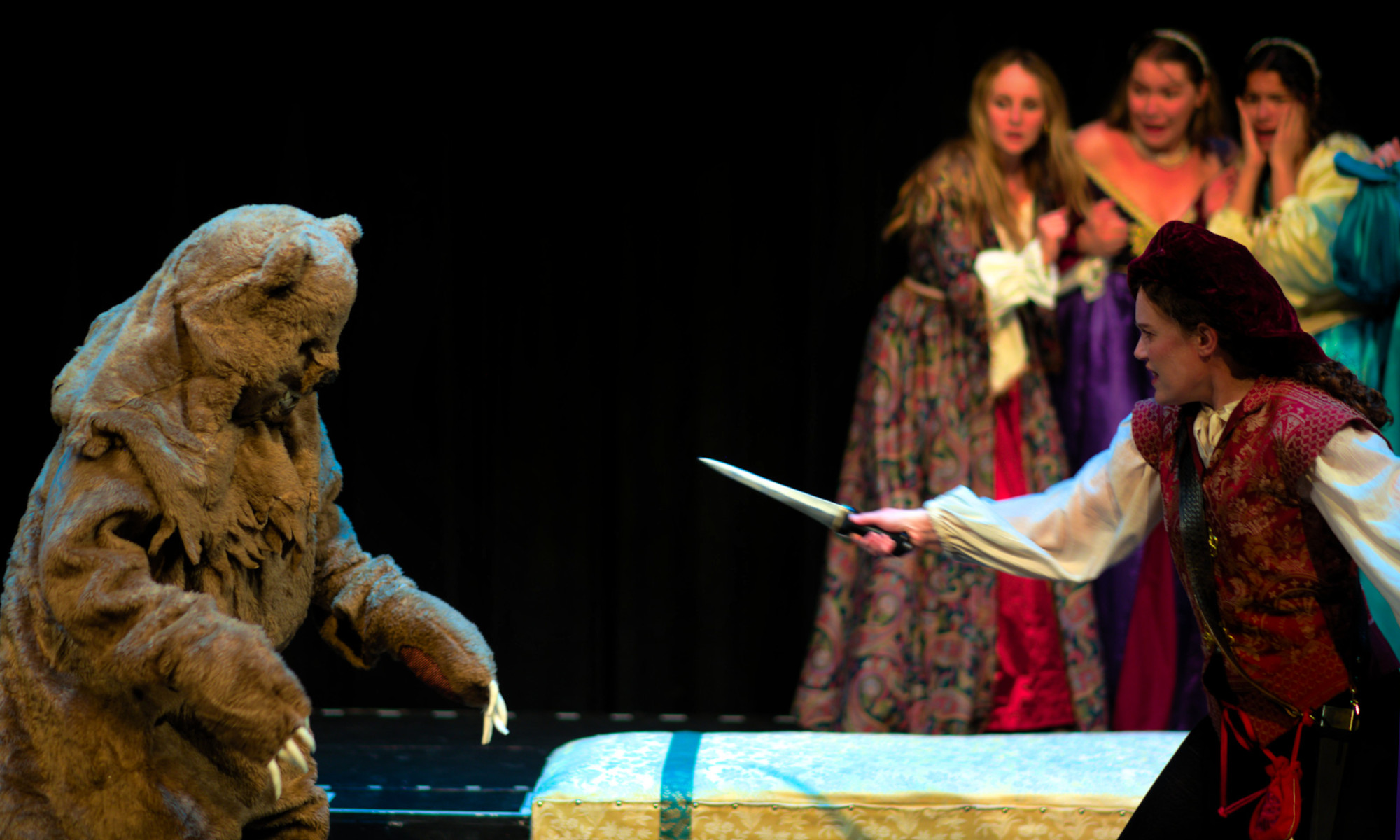We opened our fourteenth season with Man and Superman by George Bernard Shaw. It was our most ambitious production ever, and, according to Jack Crouch, the erstwhile chairman of CU’s theatre department, it was “a triumph.” Here’s why:
The Upstart Crow prides itself on its policy of never cutting or rewriting plays. When we did The Importance of Being Earnest we took the trouble to find Oscar Wilde’s manuscripts and we restored the play to the version he had originally written: a four act play that I think almost nobody but The Upstart Crow has ever done in its entirety. When we did Caligula we found that the only available English translation omitted a scene that we thought was essential to the play. We translated that scene (well, Kathy Reed translated it) and we added it to our production. When we did Molière’s Imaginary Invalid (we’ve done it three times) we actually performed the three inter-act interludes Moliere included in his production, and I think hardly any other production since his time has done that. (Actually, to be honest, not quite: The second interlude includes a dance by monkeys and no monkeys have ever shown up at our auditions, so we had a dance, but it was a monkey-free dance.)Man and Superman is loosely based on the story of Don Juan, a successful libertine that has been figured in works by Byron, Moliere, Mozart and others. In most of the stories Don Juan seduces Doña Ana, kills her father, and invites a statue of her father to the wedding. And the statue comes to life and drags Don Juan to Hell.

Shaw reverses the story. It is Doña Ana (Ann Whitefield in Shaw’s play) who proposes and pursues Don Juan (John Tanner) across Europe to seduce and marry him. Tanner escapes in his motor car and drives through Spain. In the Pyrenees he is captured by a band of Spanish bandits who hold him for ransom. It’s night, they all fall asleep and John Tanner and the bandit chief have a dream, the same dream evidently. The dream is Act III, scene ii of Man and Superman. They dream of Don Juan, Doña Ana, the statue, and the bandit chief in Hell. Juan is played by Tanner; Ana by Ann; the statue by Roebuck Ramsden, Ann’s guardian; and Lucifer by Mendoza, the bandit chief. It is virtually a complete play in its own right. It has often been played as a complete play under the title, Don Juan in Hell, but it is almost always cut from productions of Man and Superman.

I have searched the Internet for every mention I could find of performances of the play, and virtually all of them indicate that the third act was not included in the production. I did find one that said the first production that included the dream was in 1915. (The play was written in 1900.)

The reason of course is length. Don Juan in Hell is about an hour and a half long, and the rest of the play is something over two and a half hours. That would make a very long evening. And the dream contributes nothing to the plot of Man and Superman. It really is easy to pull it out.

But Shaw called Man and Superman “a comedy and a philosophy,” and most of the philosophy is in the dream scene. And watching Tanner and Ann play their legendary prototypes is enormously enriching.

So, being what we are, we did the whole play. We cast the four Don Juan characters in early summer, shortly after closing the previous season, and rehearsed that part of the play for about a month. Then, we cast the rest of the roles and rehearsed the framing play four nights a week, rehearsing Don Juan every Friday evening to keep it ready. After more than two months of rehearsal we opened on a Friday evening with Man and Superman without Don Juan. On Saturday we did Don Juan. Then, on Sunday we did a matinee performance at 3:30 of Man and Superman up through Act III, scene i. Then a break for supper, and at 7:00 the audience returned to see Act III, scene ii, and Act IV. For the rest of the run we kept up the same schedule: alternating the framing play and the dream play each Thursday, Friday, and Saturday, and doing the whole show in a matinee and evening production on Sunday.

As far as I can tell, we are the only company in America that has ever done the entire play.

















